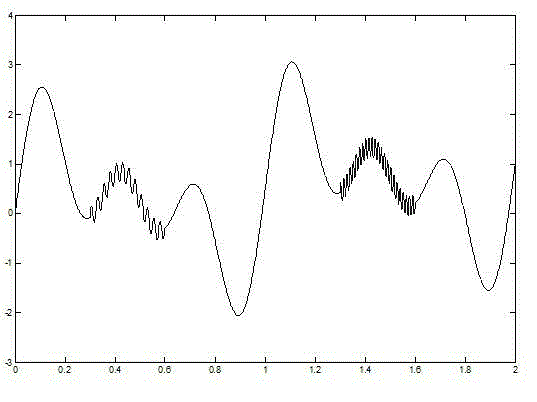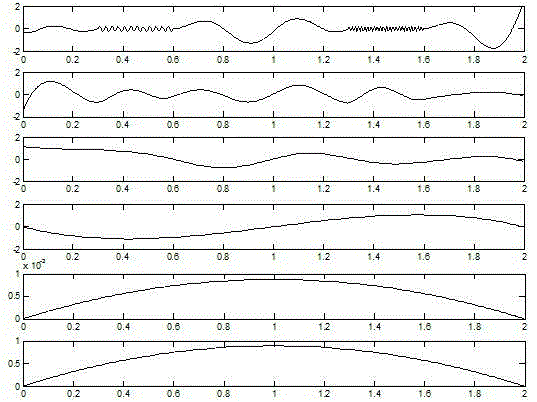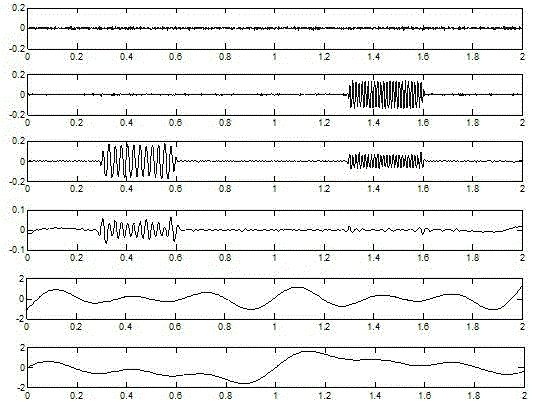Underground water signal decomposition method capable of eliminating mode aliasing
A signal decomposition and modal aliasing technology, applied in the field of signal processing, can solve problems such as modal component distortion that cannot be fundamentally eliminated
- Summary
- Abstract
- Description
- Claims
- Application Information
AI Technical Summary
Problems solved by technology
Method used
Image
Examples
Embodiment Construction
[0005] to combine figure 1 and 4 This embodiment will be described.
[0006] step one: figure 1 The simulated groundwater detection signal is discretely sampled, and the sampling point data and time are stored as an array into the array variable Xend.
[0007] Step 2: Assign the array variable Xend to another array variable Xstart with the same dimension and length.
[0008] Step 3: Obtain the maximum and minimum points of Xstart respectively.
[0009] Step 4: Calculate the time interval between adjacent extreme points T n .
[0010] Step 5: Calculate the obtained time interval T n Sort from small to large.
[0011] Step 6: Judging the time interval change rate Δ T , when Δ T When the set value is exceeded, take the value of the time interval before the change as the maximum time interval value of this request mode T max .
[0012] Step 7: When the time interval between adjacent extreme points is greater than T max , the amplitude and time of Xstart betw...
PUM
 Login to View More
Login to View More Abstract
Description
Claims
Application Information
 Login to View More
Login to View More - Generate Ideas
- Intellectual Property
- Life Sciences
- Materials
- Tech Scout
- Unparalleled Data Quality
- Higher Quality Content
- 60% Fewer Hallucinations
Browse by: Latest US Patents, China's latest patents, Technical Efficacy Thesaurus, Application Domain, Technology Topic, Popular Technical Reports.
© 2025 PatSnap. All rights reserved.Legal|Privacy policy|Modern Slavery Act Transparency Statement|Sitemap|About US| Contact US: help@patsnap.com



